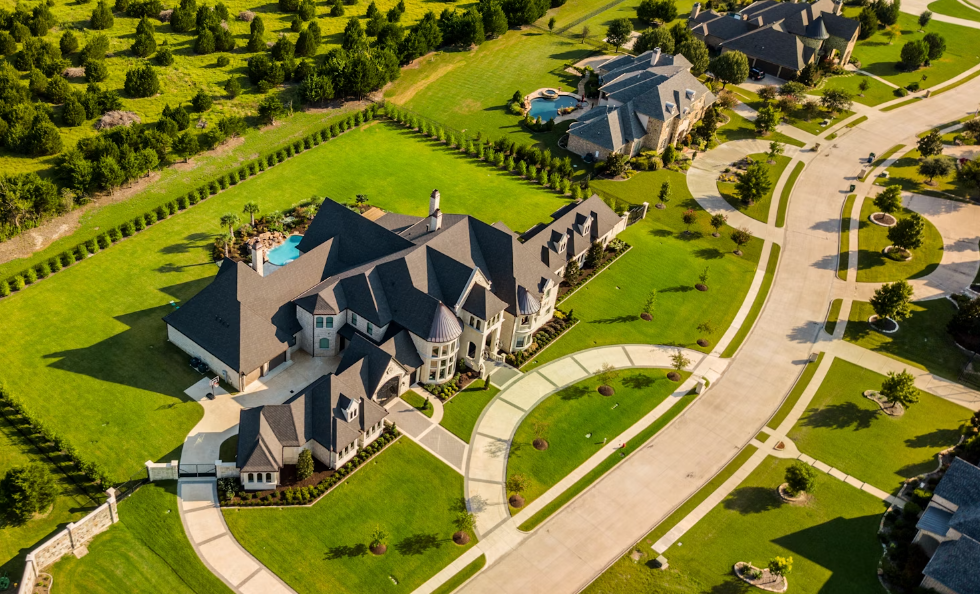How to Create a Retro Logo for Real Estate?

Contents
Creating a retro logo for your real estate business can be a unique and effective way to stand out from the competition. The retro aesthetic, with its warm colors and nostalgic appeal, can evoke a sense of trust and reliability, which are essential in the real estate industry. But how do you go about creating such a logo? In this guide, we will walk you through the process step by step.
Understanding the Retro Aesthetic
The first step in creating a retro logo is understanding what the retro aesthetic is all about. Retro design is inspired by the styles and trends of the past, typically from the mid-20th century. It often features bold, saturated colors, simple shapes, and typography that harkens back to the era of hand-drawn lettering.
However, retro design isn’t just about copying old styles. It’s about taking inspiration from the past and reinterpreting it in a modern context. This means that while your logo should have a vintage feel, it should also look fresh and relevant today.
The Importance of Color
Color plays a crucial role in retro design. Retro color palettes often feature warm, earthy tones like brown, orange, and mustard yellow, as well as bold, vibrant colors like red, blue, and green. These colors can evoke a sense of nostalgia and comfort, which can be very appealing to potential clients.
When choosing colors for your logo, consider the emotions and associations that different colors can evoke. For example, blue can convey trust and reliability, while green can suggest growth and prosperity. Choose colors that align with your brand’s values and goals.
The Role of Typography
Typography is another key element of retro design. Retro fonts often have a hand-drawn feel, with thick lines and rounded edges. They can be bold and eye-catching, or they can be more subtle and understated, depending on the overall design of the logo.
When choosing a font for your logo, consider how it will look in different contexts. It should be legible at small sizes, and it should look good both in print and on digital platforms. Also, consider how the font’s style and personality align with your brand’s image.
Designing Your Logo
Once you have a good understanding of the retro aesthetic, you can start designing your logo. This process involves several steps, from brainstorming ideas to refining your design.
Start by sketching out some rough ideas. Think about the shapes, colors, and fonts that you want to use, and how they can be combined to create a cohesive design. Don’t worry about getting it perfect at this stage; the goal is to generate a range of ideas that you can refine later.
Refining Your Design
After you have some rough ideas, you can start refining your design. This involves making decisions about the details of your logo, such as the exact colors, shapes, and typography.
Consider how your logo will look in different contexts. For example, how will it look on a business card, on a website, or on a billboard? Make sure that your logo is versatile and adaptable, so that it can work in a variety of formats and sizes.
Also, consider how your logo will look in black and white. While color is a key element of retro design, your logo should also be effective in grayscale. This is because it may need to be reproduced in black and white in certain situations, such as in newspaper ads or on promotional merchandise.
Getting Feedback
Once you have a refined design, it’s a good idea to get feedback from others. This can help you identify any potential issues or areas for improvement that you might have overlooked.
Ask for feedback from a variety of people, including colleagues, friends, and potential clients. Ask them what they like and don’t like about the design, and how well they think it represents your brand. Use their feedback to make any necessary adjustments to your logo.
Finalizing Your Logo
After refining your design and getting feedback, you can finalize your logo. This involves making any final adjustments and preparing your logo for use.
Make sure that your logo is in a format that can be easily used in a variety of contexts. This typically means having a vector version of your logo, which can be scaled up or down without losing quality. You should also have versions of your logo in different colors and orientations, so that you can use it in a variety of situations.
Finally, consider how you will protect your logo. This might involve trademarking your logo, to prevent others from using a similar design. Consult with a legal professional to understand your options and to ensure that your logo is properly protected.
Conclusion
Creating a retro logo for your real estate business can be a rewarding process. It allows you to create a unique and memorable brand image, while also evoking a sense of nostalgia and trust. By understanding the retro aesthetic, designing and refining your logo, and preparing it for use, you can create a logo that truly represents your brand and helps you stand out from the competition.
Remember, a logo is just one part of your brand identity. It should be consistent with your other branding elements, such as your color palette, typography, and visual style. By creating a cohesive and consistent brand identity, you can create a strong and memorable impression on your potential clients.
Ready to infuse a touch of nostalgia into your real estate brand with a custom retro logo? Let Boon’s AI-powered platform transform your vision into reality. With Boon, creating a logo that resonates with your brand’s story and engages your audience is just a few clicks away. Let’s make a logo! and watch as Boon crafts a design you’ll adore in no time. Whether you’re looking to capture the essence of yesteryear or modernize with a retro twist, Boon is here to ensure your real estate business stands out in today’s market.

As our Chief SEO & Branding Strategist, Robert Ellison is a digital marketing visionary with over 25 years of experience transforming brands through smart, data-driven SEO and impactful storytelling. Known for his expertise in aligning technical SEO with authentic brand narratives, he leads our team in creating strategies that boost search rankings while building strong, sustainable brand identities. A trusted advisor and frequent industry speaker, Robert combines deep technical knowledge with creative insight, helping our clients not only reach the top of search results but also genuinely connect with their audiences.
